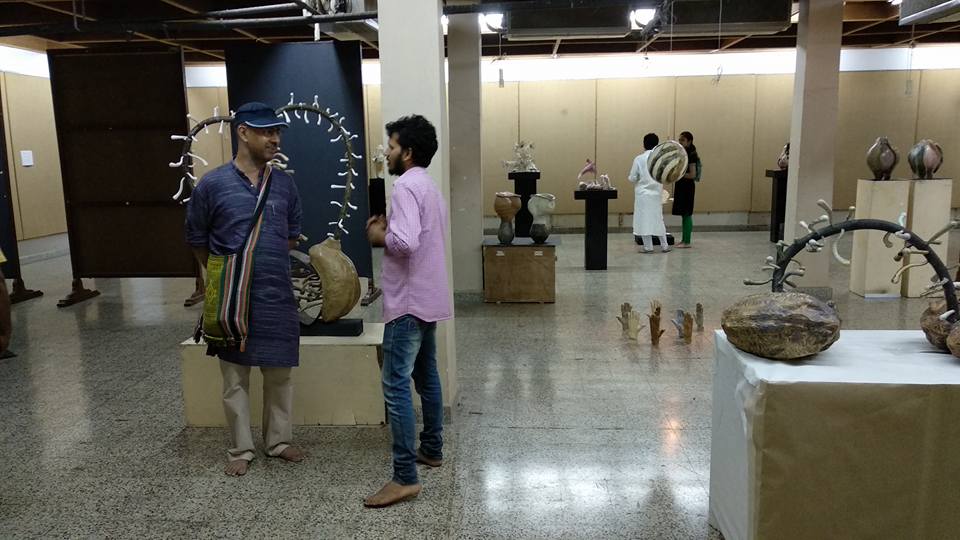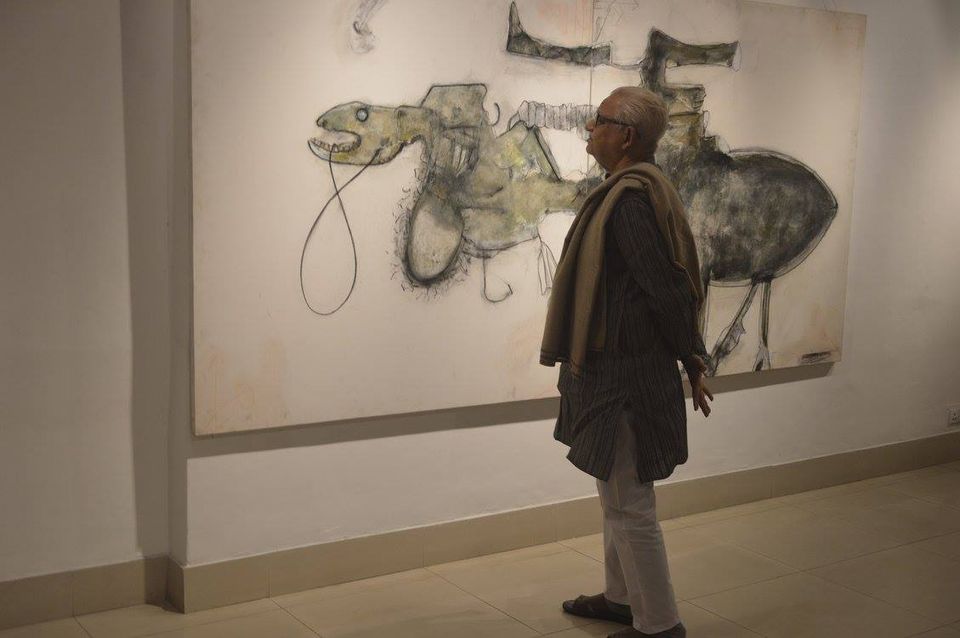Ritwij Bhowmik
For the last few months, Sunil Sinha (name changed), a freelance artist based in suburban Kolkata, is unemployed and literarily living a penniless life. It is not his fault. Five schools that he applied for art-tutorship notified him that they temporarily suspended recruitment because of COVID-19. He might reapply or have his original application reviewed next year, he was told by one of the official. This, however, is not reassuring for Sunil, who is desperate to get a job soon.

Compounding the problem, Sunil can’t complete his ongoing mural at a posh Kolkata restaurant due to the sudden lockdown. “I am hopeless about it. No work means no pay,” he says. The mural was at the final stage, and most of the unused materials left at the venue will be ruined. This untimely closure will impact him financially.
Sunil is just one of countless Indian artists who have been affected by the COVID-19 pandemic. For some, the lockdowns have made it challenging to complete their pending work and getting paid. But for others, they come at a crucial crossroads in the career, threatening to lose their only livelihood—a small part of the broader human misery that COVID-19 has generated.

Across the globe, the visual-arts sector is one of the most affected of all. It has to deal with the unforeseen alteration in their regular functions with an indefinite conclusion. With the lockdown in India, most art institutions (including private galleries, auction houses, art schools) were closed for an unspecified time, with art exhibitions, events, and business canceled. Many prominent schools laid off their art teachers to harness expenses. Countless artists had temporarily or permanently lost their bread and butter. However, unlike developed countries, virtually no financial stimulus from the government for artists made things worse. Relatively speaking, there is worrying public attention for the art and artist among the Indian public, and pandemic strapped it for worse.
The pandemic is something unexpected to the Indian art, and it is going to derail the careers of young artists, says Prof. Ashok Bhowmik, a former professor of Kala-Bhavana, Santiniketan. Nevertheless, it is expected to have the most devastating impact on the early-career artists, he notes. The problems will begin at the grass-root level artists, where Art means the only income source. “Consequently, a whole generation of artists from the lower-income group will suffer,” Bhowmik says. If that happens, Indian art, by and large, will not be the same as before.

“The commotions will upheaval the careers of early-career artists of all walks,” says Prof. Indrapramit Roy of MSU Baroda. The troubles will start at the BFA level when tomorrow’s artists begin to attend and participate in various national and state-level exhibitions—most of which are now either canceled or happen at a slender level. There are also fewer art shows and art-fairs this year – which functions as a good revenue earner for young artists. “Subsequently, there will be considerably fewer involvements and participation this year,” Prof. Roy says.
For the students already in their final years, abrupt lockdown conceivably coerces them to delayed graduation. That will further hinder finding a job or to pursue higher studies after graduation. A final-year MFA student in Santiniketan—who refused to be named—states that she already planned her career after graduation, however, she is now preparing for continuing studies for few more years and will later join a PhD. The COVID-19 and growing recession-like situation, forcing her to think about a career, not as an ‘artist’ but as an ‘art-researcher.’ “Folks already got a government job are in a better position now, whereas most of us [who dream of becoming an artist] are left in the lurch,” she says. Many, especially the ones coming from economically weaker sections, already think of leaving this profession for good and joining other trades. Others will be desperate to secure a PhD studentship at any university.
In 2020, the Indian Art Market was already going through a clod start that was continuing from the past decade. A vast section of the domestic galleries is now comfortable to play safe by investing in the “Big Names,” with a blind eye for talented newcomers. Then this unexpected pandemic changed everything for the worse. It took the livelihood of thousands of unemployed artists and also affected the graduates freshly minted from the art colleges. In response, there are some efforts to provide alternative amenities through social media and digital platforms––giving new hopes. There is also an endeavor to maintain essential happenings with negligible resources that include new creative sows stirred by the pandemic.
For Sunil, he will continue his pursuit to finish his commission artworks—hoping that he will get his due. Beside it, he is participating in various online art exhibitions. “Artists have always endured natural calamities and wars. I hope the things will soon get better––with more people interested in attending online exhibitions and collecting art,” said Sunil.

